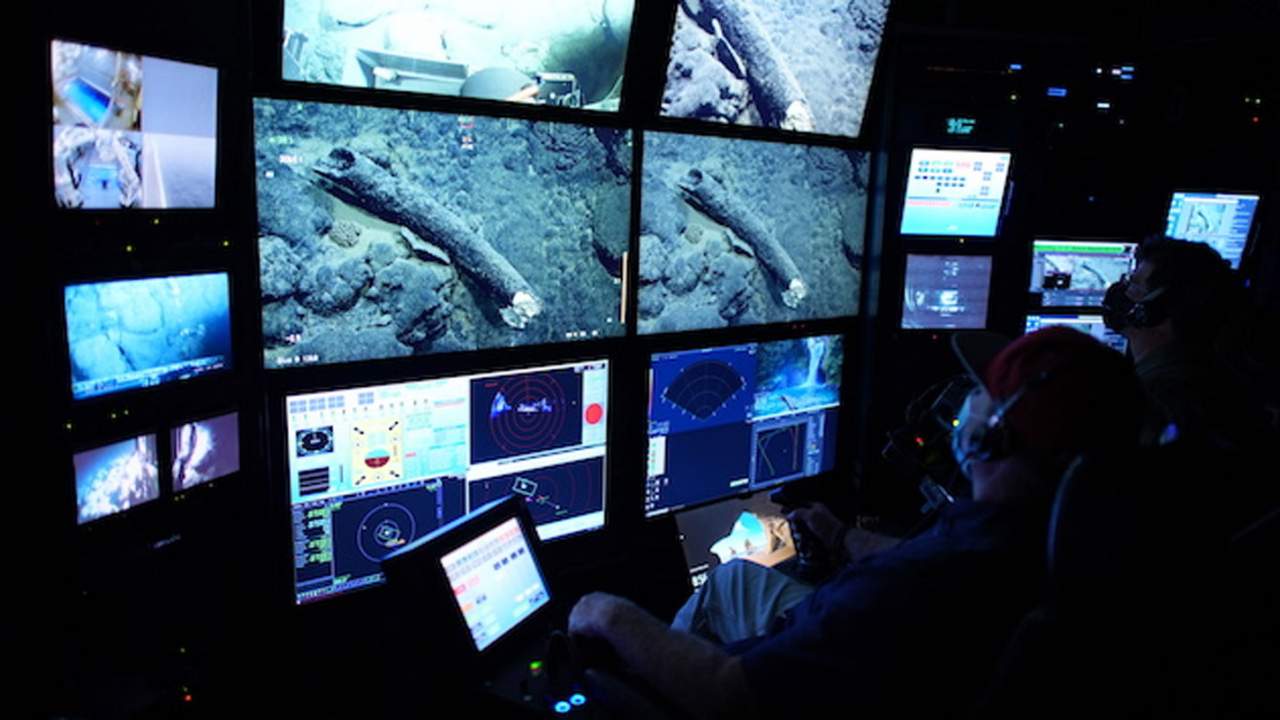For important of recorded history, the geography of mainlands worldwide has been constant and little changing. Still, over the eons, the ocean situations have risen and fallen depending on the terrain on the earth. Thousands of times agone, some of the earth that’s now covered in water was dry land, and ancient brutes floated there freely. A group of experimenters from the Monterey Bay Aquarium Research Institute conducting deep- ocean studies off the seacoast of California made an intriguing discovery During their exploration, an aquatic drone airman Randy Prickett and scientist Stephen Haddock discovered commodity unanticipated. While exploring an aquatic mountain about 185 country miles off the reinforcement of California at a depth of bases, they spotted what appeared to be an giant’s tusk lying on the seafloor. When they made the discovery, the platoon collected a small sample from the tusk and returned in July 2021 to recoup the complete instance Scientists have been examining the instance since its reclamation and have discovered that the tusk does n’t come from an giant. Rather, it’s a tusk from a Colombian mammoth that’s about three bases in length. We might not suppose about the ocean depths as conserving material, but in this case the cold and high- pressure terrain in the deep ocean have uniquely saved the instance.
The largely saved instance allows scientists to study it in detail using reckoned tomography reviews to reveal the three-dimensional internal structure. Scientists were also suitable to learn further information about the history of the beast, including its age. Experimenters are studying multiple aspects of the instance, including details about the beast the tusk belonged to. Meanwhile, experimenters from the University of California, Santa Cruz, are probing when and how the tusk arrived at such a great depth and so far off the reinforcement of California The instance is believed to be the oldest well- saved mammoth tusk recovered in North America. UCSC’s Geochronology Lab, led by Terrence Blackburn, is working to date the instance. By assaying radioisotopes, they learned the tusk is over times old. Blackburn said the instance was dated by assaying radioisotopes, largely grounded on the natural radioactive decay of uranium and thorium isotopes the tusk gathered from the ocean. Since the instance was plant in the ocean, it’s easier to learn about the instance’s history than it would be had it been plant on land.
Experimenters Christopher Edwards and Patrick Drake are examining ocean currents to determine where the tusk firstly came from. It would appear the scientists do n’t believe the mammoth failed where the tusk was plant in the distant history. While other experimenters work to date the instance and determine where it firstly came from, UCSC Paleogenomics Lab scientists led by Beth Shapiro will sequence DNA from the instance in the expedients of gaining information about how monsters settled North America. Shapiro will work with an assistant experimenter Katherine Moon to recover DNA from the tusk and compare it to samples from other monsters Shapiro says the instance offers a rare occasion to learn further about the beast the tusk belonged to and the terrain it lived in. Mammoth remains from international North America are rare, and scientists anticipate DNA from the instance to give new sapience and upgrade what they know about North American monsters While utmost of the face of our earth has been completely explored, the abysses remain largely a riddle. Since utmost of our earth is covered in water, the abysses represent 99 percent of space where life can live. Yet, despite holding similar high eventuality for life, we know fairly little about the abysses around the world. Experimenters on this design note that discovering this rare instance in the deep ocean highlights the threat of booby-trapping the ocean depths With the world moving to electric vehicles and high-tech products that bear precious essence, the desire to booby-trap the ocean bottom for essence is adding. The discovery of the mammoth tusk lying on the ocean bottom shows that we can learn a lot about ancient land creatures by
The tusk belongs to a Colombian mammoth (Mammuthus columbi) that inhabited North America as far north as the northern United States and as far south as Costa Rica during the Pleistocene time. Utmost will more know the Pleistocene time as the Ice Age, which lasted from about to times agone. That period is our earth’s most recent period of repeated glaciations The Columbian mammoth was a mongrel species and one of the last monsters to bat the Earth. The critter was a mongrel of the woolly mammoth and another mammoth lineage from campo monsters. Interestingly, another species of mammoth evolved from the Colombian mammoth, known as the pygmy mammoth. The closest living species to Columbian monsters being moment are Asian mammoths.
Columbian monsters were massive brutes that could reach 13 bases altitudinous at the shoulders and weigh pounds, making them one of the largest species of mammoth. The critter had veritably long twisted tusks and a box analogous to ultramodern mammoths used for manipulating objects, fighting, and rustling. One reason the discovery of the tusk is so significant is that no saved cadavers have been discovered That makes the discovery of samples like this tusk critically important to gathering DNA to learn further about the species. Data gathered from tusks like these have preliminarily shown that when alive, the critter lived in open areas and ate meadows and other shops, and did n’t live in Arctic regions preferred by the woolly mammoth. And while we ’re at it, a lately released bit of exploration suggested that humans did n’t beget the extermination of woolly monsters, as generally believed.
